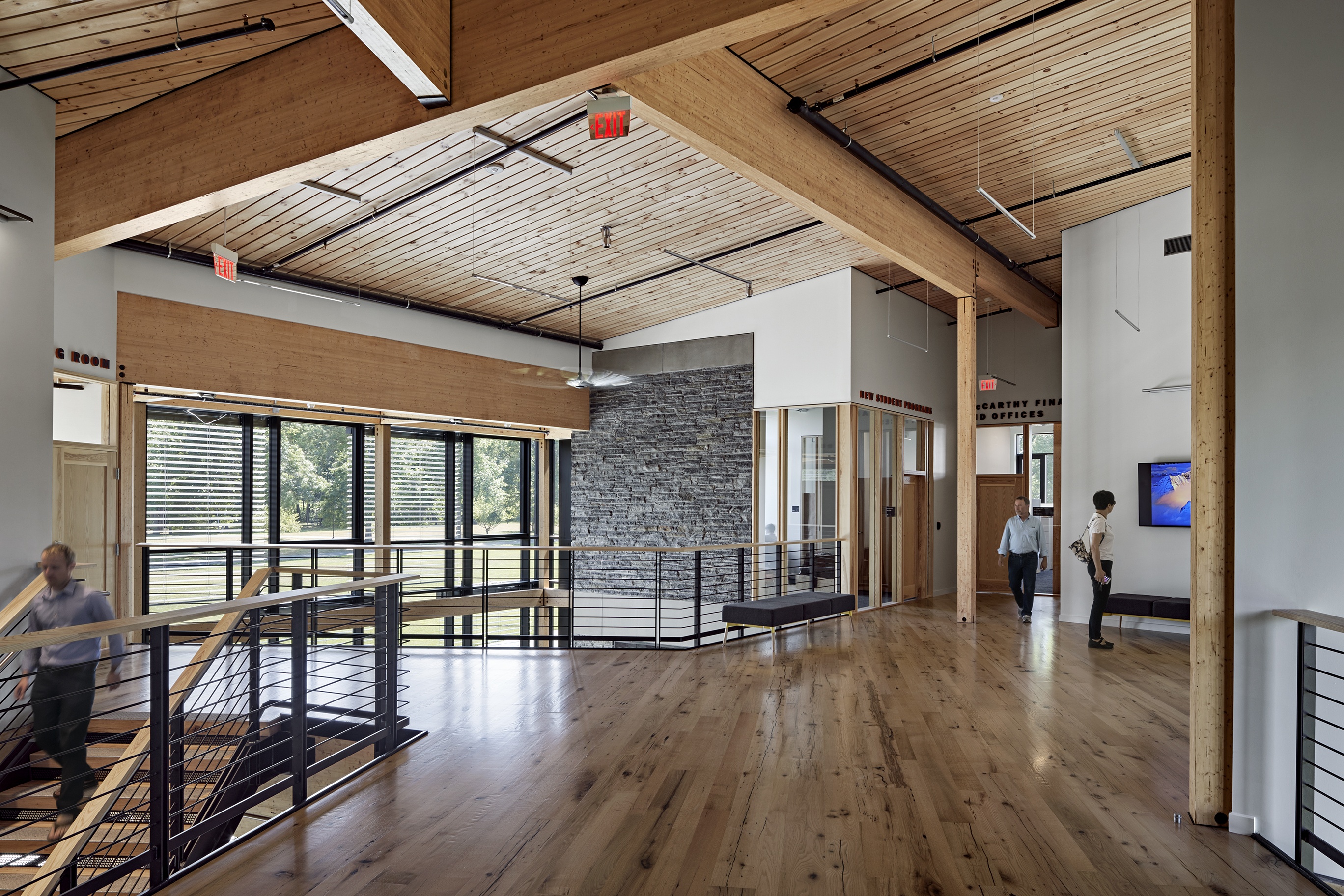
Materials
The R.W. Kern Center exemplifies a values-based approach to materials selection, achieving a balance between durability, easy maintenance, local sourcing, responsible industry, and avoidance of “Red List” substances. The team sought out versatile, low-impact, and proven materials, and designed the building around this palette.
Materials were selected to meet the intersecting imperatives for local sourcing, responsible industrial practices, and avoidance of Red List substances which have adverse effects on human health and the environment. The design team chose carbon-sequestering wood as the major structural material. Minimal use of energy-intensive steel and concrete, and use of local and salvaged materials, reduced the project’s carbon footprint dramatically. The palette of wood, concrete, and stone is durable, beautiful, and practical. The building features schist cladding from a nearby quarry, a polished concrete slab with local aggregate, salvaged oak planks, and tables made from campus trees. The simple design also reduced product vetting efforts. Other components, like the triple-glazed windows and high-efficiency mechanical systems, were selected primarily for their superior performance and quality.

The RWKC was also designed for low end-of-life impact. Most of the building is insulated with cellulose, a low-carbon, high-performance, non-toxic, and recyclable material. The bolted connections of the engineered timber structure allow components to be taken apart for re-use or relocation. The simplicity of the material palette also minimizes separation and sorting work on disassembly, increasing the likelihood of salvage and re-use.
The design team pre-vetted many complex or important products to include in the specification. The remainder of the products were sourced and vetted during construction as part of the submittal process. This helped ensure successful vetting of complex products, but allowed the design team to take advantage of the clout and experience of the construction team for vetting the majority of products. The knowledge and experience of the team’s LBC materials consultant was invaluable in terms of saved time, quality of documentation, and team education.







